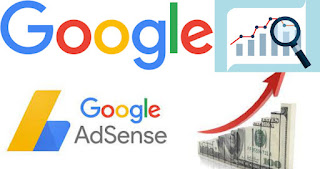Optimize Your Blog Post for Google Ranking and AdSense Revenue
Optimize Your Blog Post for Google Ranking and AdSense Revenue
To create a blog post that has the potential to rank well on Google and generate revenue through Google AdSense, you can follow the general layout and optimization practices outlined below.
01) Eye-Catching Title:
Craft a compelling and relevant title that includes your target keyword. Use power words or numbers to make it more engaging.
02) Introduction:
Write an attention-grabbing introduction that provides an overview of what the blog post will cover. Include your target keyword naturally within the first few sentences.
03) Engaging Content Structure:
Break your content into sections with descriptive subheadings. This helps readers and search engines understand the structure and flow of your post. Use header tags (H2, H3) for subheadings.
04) High-Quality and Unique Content:
Create informative, well-researched, and original content that offers value to your readers. Aim for a word count that thoroughly covers the topic while keeping the content concise and engaging.
05) Keyword Optimization:
Use your target keyword strategically throughout the blog post, including in headings, subheadings, and naturally within the content. However, avoid keyword stuffing, as it can negatively impact readability and SEO.
06) Internal and External Links:
Include relevant internal links to other articles on your blog, which can increase engagement and improve SEO. Additionally, incorporate reputable external links to high-quality sources that support your content.
07) Visual Appeal:
Enhance your blog post with relevant and visually appealing images, infographics, or videos. Optimize the file sizes for faster loading speeds and add descriptive alt tags for search engine optimization.
08) Readability:
Ensure your content is easy to read and understand. Use short paragraphs, bullet points, and bold/italic formatting to highlight important information. Aim for a conversational tone to engage your audience.
09) Meta Tags:
Write a compelling meta title and meta description that includes your target keyword. These elements appear in search engine results and can impact click-through rates.
10) Call to Action (CTA):
Include a clear CTA at the end of the blog post, encouraging readers to engage further, such as subscribing to your newsletter, leaving comments, or sharing the post on social media.
11) Optimize for Mobile:
Ensure your blog post is mobile-friendly and responsive. Most users access content through mobile devices, so it's crucial to provide a seamless browsing experience.
12) SEO Plugin/Tools:
Consider using SEO plugins or tools to help optimize your blog posts for search engines. These tools can assist in analyzing keyword density, readability, and other important SEO factors.
13) Ad Placement:
Strategically place Google AdSense ads throughout your blog post to maximize visibility and click-through rates. However, be cautious not to overwhelm your readers with excessive ads, as it may affect the user experience negatively.
Remember, achieving high rankings and generating revenue through AdSense requires consistent effort, quality content, and optimization. It's important to stay updated on SEO best practices, monitor your analytics, and adapt your strategies accordingly.





Post a Comment